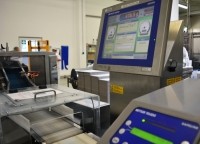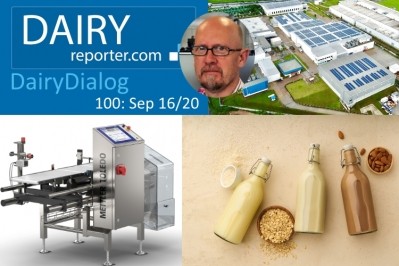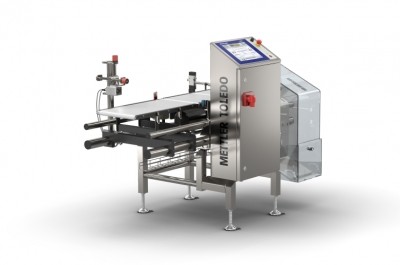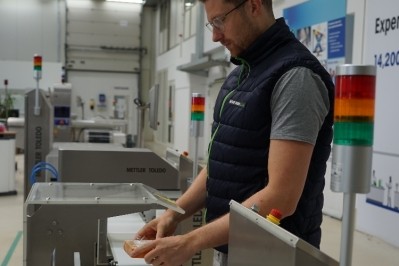Dynamic checkweighing in washdown environments
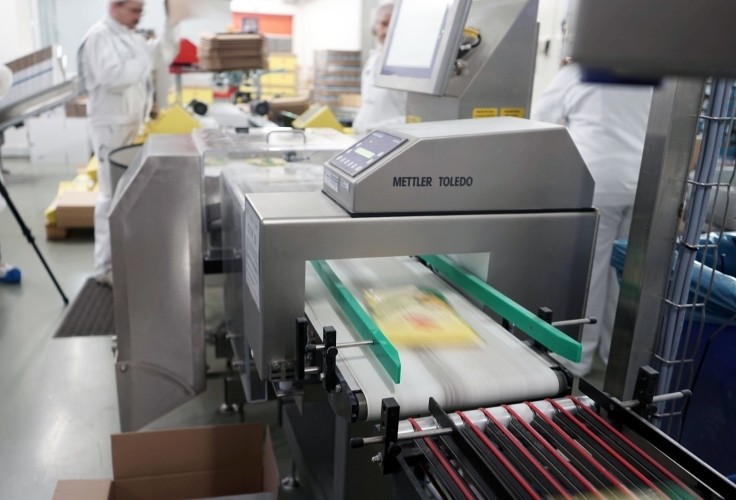
Rainer Mundt, head of marketing at Mettler-Toledo Product Inspection Germany, told DairyReporter with applications such as checkweighing in a washdown environment, it is worth looking at the small print before making an investment decision.
Microbiological contamination in milk and dairy products such as cheese, yogurt or ice cream can have devastating consequences. Aggressive washdown routines using high-pressure rinsing and caustic detergents are the means of choice for risk control in production environments in dairies and milk-processing plants, Mundt said.
The processes are always very similar, regardless of operation: rinsing, removing dirt, rinsing the system again; then disinfection to reduce microbiological contamination to a permissible level and rinsing again, provided the disinfectant does not have to remain on the system surface. Equipment manufacturers often describe systems and equipment that can withstand high pressure wet cleaning and caustic detergents as "washdown-capable."
However, Mundt said, the designation “washdown-capable” does not follow a uniform international standardization, but merely reflects the internal risk assessment of the respective manufacturer and sometimes also considers industry-specific requirements in the assessment. The result is, from the customer's point of view, it is difficult to compare systems.
When evaluating a checkweigher suitable for washdown environments, the degree of protection of its electrical or mechanical components, the materials used and the system design of the checkweigher from a hygienic point of view (surface finish, dismantling, etc.) must be assessed, Mundt said.
Checklist:
- Are horizontal or inclined casing surfaces installed?
- Do the operating panel and device have the same IP rating?
- How big is the area of the device that is in direct contact with the ground?
- Which norms and standards does the system meet?
- Does the manufacturer provide further information on washdown capability beyond the IP rating?
“From the customer's point of view, the ingress protection (IP) of electrical casings is often of particular interest,” he said.
“With regard to protection against ingress of water or solids, the IP rating developed by the IEC is certainly the best known. Rule of thumb: To ensure the washdown capability of the checkweigher, an IP66 or IP69 rating usually proves to be sufficient, for hygienic washdown environments IP69 is recommended. In addition to the IP rating as the most well-known standard, the NEMA rating by the National Electrical Manufacturers Association, which includes a much stronger focus on environmental hazards beyond water and dust, should also be mentioned.
“Usually, the ratings NEMA 4 (waterproof casing) and NEMA 4X (waterproof and corrosion-resistant) are recommended for washdown environments and NEMA 4X for washdown processes in a hygienic production environment, respectively. Generally speaking, NEMA ratings are best used in combination with an IP rating, as the requirements of the two standards do not exactly match. IP ratings only indicate the degree of protection against dust and water, while the NEMA ratings take into account additional factors with regard to the suitability for the production environment, such as corrosion resistance, material thickness, etc.”
However, sustainable, future-proof investment decisions for washdown-capable checkweighers cannot be based on ratings alone, Mundt added, noting that attention must be paid to the extent to which the production facilities in dairies are designed for efficient cleaning processes. Any loss of time during cleaning is synonymous with a loss of efficiency and revenue.
Systems advertised as "washdown-capable" should meet the requirement of making the cleaning process as easy as possible, he said.
For checkweighers in food production, the two standards ANSI 3A 14159-3-2019 and ISO 14159: 2008 are of particular interest. Mundt said these are the hygienic design reference for dynamic checkweighing in washdown environments.
Mundt added that Mettler-Toledo has been working on the development of product inspection systems that can not only withstand the stresses of intensive cleaning, but also make cleaning processes as easy and efficient as possible by means of the design of the device itself. With checkweighers, this includes the possibility of easily removing individual components such as the conveyor belts for both a more effective and faster cleaning – and ultimately the regular replacement of the belts in order to avoid production interruptions.
Before making an investment, Mundt said, it is also worth taking a look at the frame construction: An open design simplifies access to all areas of the device during cleaning that potentially come into contact with the milk products and can thus be contaminated.
“Product residues that have remained in the checkweigher or spilled on the floor, such as pieces of cheese or small flakes of butter, are much easier to remove with the open frame construction, minimizing the risk of bacteria, mold or other contaminants accumulating unnoticeably in areas that are difficult to access. Corrosion resistance and the absence of pores in the materials used are essential.
“Therefore, the most economical material option is stainless steel. It is smooth, non-porous, non-reactive, non-toxic, and durable. Customers should pay attention to welds on the frame being smoothed and polished to prevent dirt from building up. Inclined surfaces and rounded frame supports prevent an accumulation of liquids and/or solids in cracks or edges.
“Just as much care is required when placing and handling the user interface. It must be clarified at an early stage whether the user interface can be cleaned in the same way as the rest of the system. Ideally, the user interface has the same IP rating as the checkweigher. This considerably accelerates and simplifies the cleaning process, as the user interface does not have to be covered or removed.”
Mettler-Toledo recently introduced a range of washdown-capable checkweighers for weighing applications in food production. The systems have been developed for use in environments where cleaning processes with caustic detergents are used to manage the risk of bacterial contamination.

